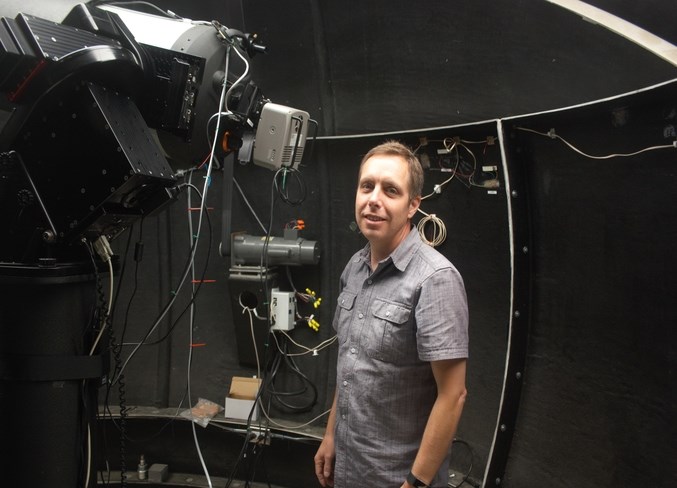Photography enthusiasts battled the elements as they endeavoured to capture images of the night sky during the sixth annual Adventures in Photography workshop Aug. 10 to 12.
The workshop was done in partnership by Athabasca University Geophysical Observatories (AUGO), the Rotary Club of Athabasca and Science Outreach - Athabasca. It offered an opportunity for people to learn low-light photography, night sky photography and enjoy presentations, according to program co-ordinator Mavis Jacobs. Participants travelled to an Athabasca University observatory south of town in the Forfar recreation area to try their hand at snapping pictures of nature and the stars.
But capturing images of the night proved to be difficult with the weather conditions, Jacobs said.
"It was a little bit smoky and a little bit cool and a little bit rain, so we had to be very creative," she said.
There were not any optimal conditions for night sky photography, Jacobs said. However, participants were kept busy photographing subjects like burning steel wool, a flashing fire truck and sparklers.
"It was just an amazing amount of information right at your fingertips," said workshop participant Deb Weber. "We had lousy weather, but we had an awesome time."
The event is capped at 12 and had five registrants, below the average of seven or eight participants it usually garners, according to Jacobs. She faulted the decrease to the August scheduling, when people go on vacation. She added she expects the event will go back to September next year despite the care needed for the colder weather.
Digging into the stars
The workshop also featured presentations from Athabasca University professors Martin Connors and Ian Schofield, who talked about different types of astronomical phenomenon, as well as tips on different types of photography.
Schofield discussed smartphone photography in his presentation, which is becoming increasingly prevalent in the public, he said.
"Smartphones are the preferred camera of choice for most people," he said in an interview. "I thought it was important to touch on smart photography briefly."
Despite poor weather on the weekend of the workshop, Schofield said Athabasca's rural setting allows it to be an easy place to do good night sky photography.
"We're far away from Edmonton so we don't get much light pollution," Schofield said. "We have low amounts of light pollution in Athabasca County."
Connors said he discussed meteor showers and taking photographs with an ordinary DSLR camera during his presentation.
In researching magnetic field lines, Connors said Athabasca is special in that its auroras tend to be the less-common proton variant, which is faint and have a bluer hue than other auroras.
"They're very fain and that's one of the reasons we're very sensitive to light pollution," he said. "They're too faint to see in them with their naked eyes so we have to photograph them with special equipment."
For that, AU uses special auroral cameras situated in its shared facility in the Forfar area, Schofield said.
Star party
Athabasca University is planning to invite people back to enjoy an evening of star sighting with a Star Pary Sept. 15.
Connors said the night sky should align in a way where many planets will be visible and the possibility of some aurora once the moon sets, with telescopes available for people to use. The event will also be combined with an arts event featuring local filmmakers and artists and is being co-ordinated with other sky activities across Canada by the Royal Astronomical Society of Canada.
The university's observatory department is invested in engaging the community through events like these, Connors said.
"A lot of people are interested in astronomy," Connors said. "They also like to bring that opportunity to people because people are interested in the subject and to get to do it first hand is kind of exciting,"



